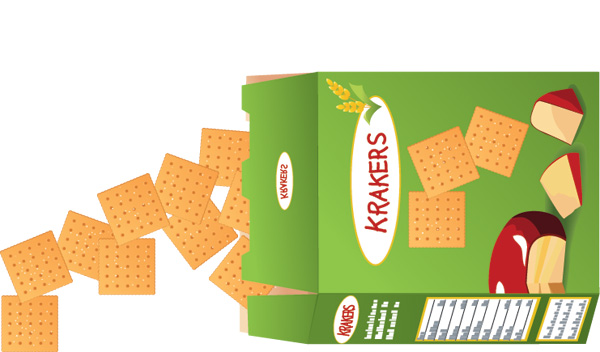By Janis Jibrin, M.S., RD, TheBestLife.com Lead Nutritionist
When you see “whole grain,” “low fat,” and other health buzzwords on a food label, you might assume you’re picking up a more nutritious choice. Unfortunately, that’s not always the case. Some products don’t offer much of an advantage compared to the original or, even worse, aren’t inherently healthy at all. Let me share a few examples.

Health Food Fake Out: Neufchatel (cream cheese with 1/3 less fat)
It’s true that this product has about a third fewer calories and saturated fat grams than regular. But still, just 2 tablespoons (an ounce) contains 3 grams of saturated fat—that’s a sixth of your daily limit on an 1,800-calorie diet. And the 33 milligrams of calcium it provides aren’t worth it.
Healthier Alternatives: The Laughing Cow Classic Cream Cheese has a slight nutrition edge with 100 mg of calcium per wedge (about ¾ ounce), and their Light Creamy Swiss is another spreadable option with just 1 g of saturated fat and 80 mg calcium. Or, even better, spend those 3 grams of saturated fat on an ounce of Cabot 50% cheddar, which contributes 200 mg of calcium.

Health Food Fake Out: Reduced sodium soups
Before I dump on this category, I must say that some really do offer a nutrition bonus. For context, regular canned soups generally range from 650 to 800 milligrams of sodium per cup. (Your daily sodium limit is 2,300 mg; or 1,500 if you have high blood pressure or are at risk for heart disease). And let’s be realistic—who ever consumes just a cup? We all polish off a can, which is generally about two cups.
Healthier Alternatives: I consider 350 mg or less a healthy cutoff, particularly if the soup is nutritious in other ways. Many of the Amy’s Light in Sodium bean soups fit that bill, as do some of the frozen Tabatchnick soups. But there are plenty of “reduced sodium” and “less sodium” soups out there with 450 to 660 mg per cup—hardly a sodium bargain.

Health Food Fake Out: Whole Grain Processed Foods
This can be canned ravioli, Cheez-Its and other foods you never thought were healthy to begin with. OK, maybe I’m taking a cheap shot here, but just in case you thought that Chef Boyardee Whole Grain Beefaroni was a good choice, consider the 750 milligrams of sodium per cup (1,500 mg per can!) and the fact that it’s not even 100 percent whole-grain pasta. In a similar state of denial with “whole grain” Cheez-Its? I’m compelled to burst your bubble. With white flour as the first ingredient, then oil, then whole wheat flour (ingredients are ranked in order of weight, the heaviest comes first) and just one gram of fiber per 150-calorie ounce, this is not the food to turn to for your whole-grain needs!
Healthier Alternatives: Look for cereal, crackers, breads and grain side dishes that list a whole grain as the first (and preferably only) grain or flour. Whole grains include whole wheat, whole rye, oat, quinoa, barley and spelt. Refined grains include flour, unbleached flour, potato flour, rice, rice flour, corn flour. Give our delicious whole grain Best Life recipes a try, too.
Also Read:
